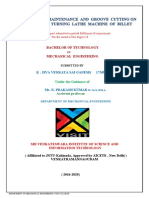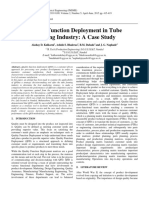0% found this document useful (0 votes)
141 views36 pagesSampleing and Sampling Distribution2016
The document discusses sampling and sampling distributions. It describes reasons for sampling such as saving money and time compared to a census. It also discusses different types of sampling techniques including random sampling methods like simple random samples, stratified random samples, and systematic random samples. Non-random convenience sampling is also covered. The document discusses the central limit theorem and how the sampling distribution of the mean approaches normality as the sample size increases, even if the population is not normally distributed. It provides examples of sampling distributions and properties.
Uploaded by
Shruti DawarCopyright
© © All Rights Reserved
We take content rights seriously. If you suspect this is your content, claim it here.
Available Formats
Download as PPTX, PDF, TXT or read online on Scribd
0% found this document useful (0 votes)
141 views36 pagesSampleing and Sampling Distribution2016
The document discusses sampling and sampling distributions. It describes reasons for sampling such as saving money and time compared to a census. It also discusses different types of sampling techniques including random sampling methods like simple random samples, stratified random samples, and systematic random samples. Non-random convenience sampling is also covered. The document discusses the central limit theorem and how the sampling distribution of the mean approaches normality as the sample size increases, even if the population is not normally distributed. It provides examples of sampling distributions and properties.
Uploaded by
Shruti DawarCopyright
© © All Rights Reserved
We take content rights seriously. If you suspect this is your content, claim it here.
Available Formats
Download as PPTX, PDF, TXT or read online on Scribd
/ 36

























































































